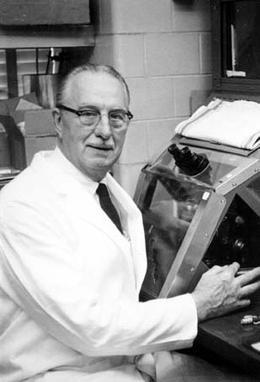The Renal Fellow network may have ranked APOL1 as the fourth biggest story of 2010 but I think it is actually the best story in all of medicine, not just nephrology.
When I went to ASN Renal Week I stayed at Castle Marne, an idiosynchratic bed and breakfast about a mile and a half from the conference center. The other people staying at the Castle were a rogues gallery of interesting conference participants.
One of the breakfast crew was David J. Friedman, the second author on the Science paper blowing the lid off of APOL1.
The APOL1 story begins in 2008 with
the discovery of MYH9. Scientists were doing whole genome analysis to find a genetic explanation for the excess renal risk African Americans face. This excess risk is seen in the dialysis population, where African Americans are over represented. This is particularly true in patients with ESRD due to hypertension. African Americans represent 13% of the U.S. population but represent 48% of the patients on dialysis due to hypertension (HA-ESRD).
 |
| Data from USRDS and US Census |
The genetic locus 22q13.1 was found to convey phenomenal excess risk of FSGS. The excess risk was 400-700% (OR5-8). In whole genome analysis, researchers are delighted to find odds ratios of 1.1-1.2. Finding ORs of this magnitude is nearly unheard of. Poking around the genetic neighborhood, the researchers found a likely genetic target, MYH9.
MYH9 codes for an intra-cellular myoglobin. MYH9 was an especially appealing candidate gene because it is expressed in podocytes and mutations of the gene had previously been found to be associated with glomerular pathology. Quickly MYH9 was declared the genetic explanation for excess risk of renal disease among African Americans and the scientific nephrology community geared up to crack every mystery related to MYH9.
It was the gene that launched a 1,000 RO1s.
 |
| The NIH and NIDDK sponsored symposia to get scientists up to speed with breakthrough discovery |
Unfortunately, no one was able to find the specific genetic mutation that led to these renal complications. From the discussion of the original paper:
A limitation of our study is that we have not yet identified the causal sequence variation in MYH9 that is associated with FSGS
Then in August 2010, David Friedman and his team identified APOL1 as the gene that actually was associated with FSGS, HA-ESRD and HIVAN. The association was discovered after new genetic material was made available in the 1000 Genomes Project, a public database of genetic information from individuals around the world including a number of Africans.
APOL1 lives just to the centromere side of MYH9. Friedman et al showed a tighter association with APOL1 than MYH9 and when they controlled for APOL1, MYH9 was no longer significantly associated with renal disease.
As the scientific community began to feel the rumbles of truth emerge about MYH9 and APOL1, researchers hitching their wagon to MYH9, prayed they were funded before the NIH scorers realized that MYH9 was the wrong gene. Scientists with research proposals on MYH9 that were too late would have to rewrite the grant to focus on the new target, APOL1.
Friedman’s team didn’t just identify APOL1 they told a fascinating story involving parasitology, evolution and human migration.
In 2003 APOL1 was identified as the genetic source for an immunity factor which protected people from African sleeping sickness. 95% of African sleeping sickness (I refuse to use the 3-letter acronym) is caused by Trypanosoma brucei gambiense.
Trypanosomes cause the mortal disease African Sleeping Sickness
Trypanosome lytic factor (TLF) protected humans from sleeping sickness until Trypanosoma brucei rhodesiense and gambiense evolved a protein, Serum Resistance Associate Protein, that deactivated TLF. This adaoptive response by the trypanosome made humans susceptible to infection. This was the state until about 10,000 years ago when variants of APOL1 appeared and restored the protective action of TLF and made the carrier of even a single copy immune to African sleeping sickness.

These genetic variants of APOL1 appeared in Africa 10,000 years ago, but much of the human race had already left Africa to spread across six continents. Additionally, regions that did not have the Tze Tze fly didn’t have trypanosomes and hence didn’t have selective pressure for the APOL1 variants. In regions endemic to Tze Tze fly, the selective pressure for these mutations was immense. In the U.S. 30% of African Americans carry APOL1. Heterozygotes are immune to trypanosomes and may have a modest increase in the risk of HA-ESRD (OR 1.26, no risk for FSGS) . Homozygotes for APOL1 are equally immune to trypanosomes but unluckily have a sky high risk of renal disease.
So APOL1 behaves like sickle cell anemia and malaria. Heterozygotes are immune but homozygotes suffer from devastating disease. Balanced polymorphism.
The last twist is the mystery of HIVAN in Africa. HIVAN is found in western, Sub-Saharan Africa. Eastern Africa has a lower rate of HIVAN than would be expected. This data comes from cohort studies done in Kenya and Ethiopia. The risk of HIVAN is associated with APOL1. The Tze Tze fly is not endemic to Eastern Africa, hence no trypanosomes, so no selective pressure for APOL1, so few people are homozygotes for the variant of APOL1 that predisposes to HIVAN.
This story was one of many that were batted around the breakfast table at Castle Marne and served to show that I found the perfect place to stay during ASN Renal Week.















